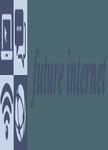版权所有:内蒙古大学图书馆 技术提供:维普资讯• 智图
内蒙古自治区呼和浩特市赛罕区大学西街235号 邮编: 010021

作者机构:St Petersburg State Univ Sch Journalism & Mass Commun 7-9 Univ Skaya Embankment St Petersburg 199034 Russia
出 版 物:《FUTURE INTERNET》 (未来互联网)
年 卷 期:2020年第12卷第9期
页 面:144页
核心收录:
学科分类:08[工学] 0812[工学-计算机科学与技术(可授工学、理学学位)]
基 金:Russian Science Foundation [16-18-10125-P] Russian Science Foundation [19-18-13031] Funding Source: Russian Science Foundation
主 题:text classification text clustering clustering of short texts neural network algorithms distributive semantics sentence embeddings least squares method Markov moment DBSCAN
摘 要:The paper is dedicated to solving the problem of optimal text classification in the area of automated detection of typology of texts. In conventional approaches to topicality-based text classification (including topic modeling), the number of clusters is to be set up by the scholar, and the optimal number of clusters, as well as the quality of the model that designates proximity of texts to each other, remain unresolved questions. We propose a novel approach to the automated definition of the optimal number of clusters that also incorporates an assessment of word proximity of texts, combined with text encoding model that is based on the system of sentence embeddings. Our approach combines Universal Sentence Encoder (USE) data pre-processing, agglomerative hierarchical clustering by Ward s method, and the Markov stopping moment for optimal clustering. The preferred number of clusters is determined based on the e-2 hypothesis. We set up an experiment on two datasets of real-world labeled data: News20 and BBC. The proposed model is tested against more traditional text representation methods, like bag-of-words and word2vec, to show that it provides a much better-resulting quality than the baseline DBSCAN and OPTICS models with different encoding methods. We use three quality metrics to demonstrate that clustering quality does not drop when the number of clusters grows. Thus, we get close to the convergence of text clustering and text classification.